- · Evaluating your pet’s teeth to look for dental disease
- · Listening for a heart murmur which could indicate underlying heart disease
- · Assessing weight and body condition
- · Manipulating joints to check for arthritis
Thursday, December 30, 2010
Annual exams in 2011
Friday, December 17, 2010
Santa Paws for WHS
Thursday, December 9, 2010
Tuesday, December 7, 2010
Holiday Dangers
 |
| Photos Courtesy of ASPCA Website |
Tuesday, November 23, 2010
Thursday, November 18, 2010
Yappy Hour - Success!
| Photos courtesy of James Robertson |
Thursday, October 28, 2010
A cautionary tale of chocolate toxicity for Halloween
Thursday, October 21, 2010
Spay and Neuter!!!
Tuesday, October 12, 2010
Keep on with those preventatives
| Frank! |
Thursday, October 7, 2010
It is official, I might be truly crazy

If anyone out there thought I was insane before with all the animals I have please let me solidify this feeling with the announcement of my new puppy -- Frank! I did not seek out a new addition to my already full house but I have been thinking for some time that Poppy would enjoy a larger dog to play with as her version of play with the Lilly, Sparkle and the cats really amounts to torture for them.
Out of the blue a ten week old labradoodle puppy needed a home and I knew he would be the perfect fit for me. I brought Frank home Tuesday night and he and Poppy have not stopped playing since. I have never seen her interact this way with another dog before and it makes me so happy that they have found each other. As for the other animals, the cats really couldn't care less and the little dogs are happy to play with him on their terms. This mean five minutes of play before they get bored and jump up on the sofa to avoid him.
Wednesday, September 29, 2010
Behavior modification - how you should be training your dog
| The Polite Puppies at Happy Paws |
Thursday, September 23, 2010
Tuesday, September 21, 2010
Kennel cough - oh no!!
Thursday, September 16, 2010
Thursday, September 9, 2010
What you should know about anesthesia
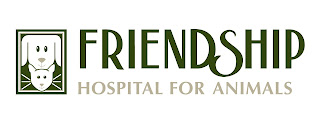
Tuesday, September 7, 2010
Agility!
Happy September! I apologize for my recent lack of posting but I took a little summer vacation from blogging during August. I am very excited to report on my fall project with Poppy – agility class!
Agility is a sport in which you guide your dog over a variety of obstacles while being judged for time and accuracy. It is a great way to strengthen the bond between you and your dog while stimulating them mentally. Many high-energy breeds like border collies and Australian shepherds are much happier when they have a job to do. Running around an agility course expels excess energy while looking to you for commands on where to go challenges them mentally.
Thursday, August 5, 2010
Tuesday, August 3, 2010
Cancer in our companion animals
Now that you know it is possible for your beloved pet to be afflicted with cancer what can you do about it? It is impossible to prevent cancer from occurring but you can take steps to catch any abnormalities as soon as possible. You should check your dog or cat frequently for any new lumps or bumps that might appear.
Thursday, July 29, 2010
Tuesday, July 27, 2010
Leptospirosis awareness
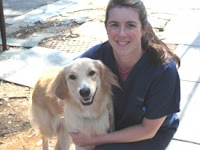
Thursday, July 22, 2010
Common Kitty Diseases
Tuesday, July 20, 2010
The horrors of puppy mills

Thursday, July 15, 2010
Surprising summertime dangers for pets
Tuesday, July 13, 2010
"How to be Your Dog's Best Friend" at DC's West End Library

I am very excited to be speaking as part of the “How to be Your Dog’s Best Friend” panel at the DC West End Public Library tomorrow evening. I have posted a preview of the topics I plan on covering, each one of these is a vital component of wellness care for your dog.
1. Vaccine recommendations
It is very important to make sure your pets are up to date on their vaccines. I will discuss the vaccines that the American Veterinary Medical Association recommends that all pets receive; these are called core vaccines as well as a few non-core vaccines I think are important.
All pets should be up to date on their rabies vaccines. This is part of the law for good reason, rabies is just about 100% fatal and not protecting your pet against it puts everyone in your family at risk. All dogs should also be vaccinated with a distemper/parvo/hepatitis combination vaccine. This group of infectious diseases can cause gastrointestinal, respiratory and neurologic problems that are often fatal.

So let’s talk about some of the vaccines that people may not know much about. These are not considered to be necessary for every animal but based on lifestyle instead. Leptospirosis is a bacteria transmitted via the urine of an infected animal, most commonly wildlife such as rats, opossums and raccoons. These animals urinate in standing water or moist soil, your dog then comes along and drinks the contaminated water and contracts the disease
Though Lepto can be treated with antibiotics, if the infection is not caught early enough it can permanently damage the kidneys and/or liver, resulting in organ failure. In some cases, the disease is too advanced by the time we catch it and ends up being fatal.
If you are putting your dog in a kennel or taking her to the groomers it is usually required that your dog be vaccinated against “kennel cough”. Kennel cough is a collective term for a highly contagious group of viruses and bacteria that cause irritation in the upper respiratory tract. It is important to realize that the vaccine only protects against the Bordetella bacteria, one of the many infectious agents that can cause “kennel cough”. If your dog is exposed to one of the many other viruses or bacteria that cause upper respiratory symptoms they can still get sick even with the vaccine. In addition even if a vaccinated animal is exposed to the Bordetella bacteria the vaccines does not prevent disease, it will only reduce the severity of clinical signs.
2. The importance of spaying or neutering your pet
I cannot stress this enough. In my opinion, spaying or neutering is the single best thing you can do, not only for your own dog but also for the millions of homeless animals living in shelters. Along with eliminating the chances for many types of cancer developing, spaying and neutering can prevent many behavior issues. I have said it before and I will say it again: female dogs in heat are messy and it is always embarrassing to have your male dog humping someone’s leg.

3. Heartworm and flea/tick prevention once a month every month
Heartworm disease is a parasitic infection transmitted when an infected mosquito bites your dog. While it’s true that infected dogs can be treated, the treatment itself is very dangerous—and can even be fatal. Left untreated, heartworm disease will kill a dog.

Protecting your dogs against fleas and ticks is important as well. Tick borne infections such as Lyme disease, Erlichia and Rocky Mountain Spotted Fever are transmitted when an infected tick bites your dog. The best way to ward these infections off is with topical flea and tick preventatives like Frontline, Advantix, Revolution, or Advantage Multi. In a temperate climate like ours, these should be applied once a month, every month.
Fleas can be extremely itching and irritating to both you and your pets. Some animals are allergic to fleas and one bite can lead to a significant skin infection. Once a flea infestation invades your home it can be very difficult to clear it out. The best bet is to prevent that from happening by applying the same topical medications that protect against ticks.
Luckily, prevention is easy: just a pill and a topical medication once a month. If only everything were that simple.
4. Avoiding obesity
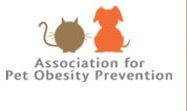
The Association for Pet Obesity Prevention estimates that 42% of dogs and 53% of cats in America are overweight. What’s worse is that an additional 10% of dogs and 19% of cats are considered obese. This means that over 50% of dogs and nearly 75% of cats are at increased risk for diseases that may be preventable. And if that’s not enough to get you motivated, consider this: one study found that dogs kept at a healthy
weight live on average two years longer than their overweight counterparts!
The best strategy for keeping your pet slim is to prevent weight gain in the first place. Never free feed. Instead, always measure out the amount of food you offer your pet. Also try to limit the treats you give to 10% of your pet’s diet. Feeding table scraps is strongly frowned upon. Give too many table scraps and your dog may end up with diarrhea or pancreatitis which can result in a hospital stay. Your pets already love you unconditionally; giving them treats doesn’t make them love you more.

5. Dental disease
Dental disease is one of the most common disorders diagnosed on wellness exams. It is estimated that 80% of dogs and 70% of cats over the age of 3 year old suffer from some degree of periodontal disease.
While a dental cleaning results in whiter teeth and fresh breath, the main benefit is to your pet’s overall health. Consider this: every time your pet chews bacteria is showered into the bloodstream. This then lodges in the kidneys, liver, lungs and heart causing damage and disease. In addition, open fractures, tooth root abscesses and worn teeth are painful and can act as a constant source of discomfort for your pet.
Rather than wait for a problem to develop, it is best to perform a dental cleaning when only mild gingivitis and/or tartar are present. This will maintain good dental health and prevent disease before it becomes a problem, which results in saving you money and more importantly keeping your pet as healthy as possible.
I realize a dental cleaning is not only expensive but it can be scary to put your pet under anesthesia. While anesthesia is daunting, at Friendship we do everything we can to make it as safe as possible with aggressive monitoring while your pet is under anesthesia. At Friendship we are convinced that the low risk of anesthetic complications is far outweighed by the benefits of good dental health. After your dental cleaning we will work with you to keep your pets teeth healthy and prevent tartar buildup. Schedule a dental cleaning and start enjoying those doggie kisses again.
Thursday, July 8, 2010
Caution for heat stroke
Summer Heat Dangerous For Dogs

Since we’re stuck in the middle of yet another heat wave in the mid-Atlantic region, I wanted to take a moment to warn dog owners about their pets’ risk of heat stroke. In the past few weeks a number of dogs have been brought into Friendship after collapsing due to heat stroke. Several dogs have even died, which is truly tragic since this could have been easily avoided.
One of the recent fatalities was a bulldog that was taken out for fifteen minutes around noon as part of a mid-day walk. He collapsed on his walk and was immediately rushed to Friendship. Sadly, despite aggressive treatment, complications from heat stroke damaged his organs so severely that he had to be euthanized the next day.

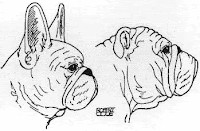
drawing by Robert Cole
What makes heat stroke potentially fatal is that the patient can develop a condition called disseminated intravascular coagulation (DIC) that causes massive and widespread damage to the blood vessels. This quickly results in multiple organ failure and the patient loses the ability to clot his blood. Treatment consists of aggressive supportive care and plasma transfusions, both of which are very expensive and not guaranteed to prevent death.
- Avoid taking your dog out during the hottest times of the day. (Quick rule of thumb: If it is too hot for you, then it is definitely too hot for your dog!)
- Keep an eye out for unusual behavior: If you are out in the hot weather with your dog and he slows down, lies down or acts reluctant to keep walking, you should let him rest, offer him cool water and head inside immediately.
- Make sure your dog has cool, fresh water available at all times.
- Never leave a dog (or any other pet) in a parked car when it is even slightly warm out. The temperature in the car can rise amazingly quickly and before you know it you have an overheated animal.
- Don’t take your dog running. (I am never a fan of running with your dog—check out this article to see why--but in this weather it is an especially bad idea).
Tuesday, June 22, 2010
Kittens!
 As I get ready for the next Polite Puppy class this Sunday I wanted to be sure I didn’t neglect the kitty owners. The shelters are always overflowing with these tiny little balls of fur in need of a home. At Friendship we offer a Kitten Plan that includes all wellness kitten visits, fecal testing, deworming, core vaccinations and ten percent off the spay or neuter.
As I get ready for the next Polite Puppy class this Sunday I wanted to be sure I didn’t neglect the kitty owners. The shelters are always overflowing with these tiny little balls of fur in need of a home. At Friendship we offer a Kitten Plan that includes all wellness kitten visits, fecal testing, deworming, core vaccinations and ten percent off the spay or neuter.
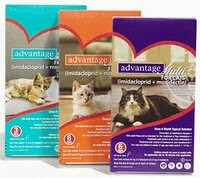
If you are worried that your cat will be bored inside please visit the Indoor Cat Initiative website for tips on how to enrich your indoor kitty’s life. All cat owners should also apply a topical product such as Advantage Multi or Revolution to protect your cat against heartworm disease, fleas and ticks. Even if you keep your kitty safely inside they are still exposed to these pesky insects and need protection just as much as dogs do. Kittens are incredibly cute and always entertaining to watch as they race around your house. Follow these simple guidelines to get your new kitten off on a healthy paw.
Thursday, June 17, 2010
Monday, June 14, 2010
New Interns!
Friendship is one of the few veterinary hospitals in the area qualified to offer an internship program for recent veterinary school graduates. It makes huge contributions to our patient care and to those fortunate veterinarians participating in the program. Internships are highly competitive. Only the most talented and motivated of new graduates seek advanced clinical training. Friendship accepts only about one out of every five applicants to its internship program. We are proud of our program and I consider myself lucky to have completed it.
Unlike medical doctors--who are required to do an internship plus a residency before beginning to practice--most veterinarians enter general practice immediately after graduation and begin practicing medicine. Alternatively, a new graduate can apply for a position in an elective, year-long program of post graduate clinical training, working side-by-side with senior veterinarians with years of experience. These programs are provided by veterinary colleges or busy, multi-doctor hospitals like Friendship.
For the fortunate graduates who are accepted, this is an exciting opportunity to obtain an enormous amount of clinical experience while also being mentored by more senior veterinarians. These programs are completely optional and very demanding. At Friendship, our interns work grueling hours and commit an entire year of their lives so that they can become even better doctors. Some go on to complete residencies in the specialty of their choice, while others, like myself, enter general practice.
From time to time, I have heard pet owners say, "I don't want an intern working on my pet." My response is: Our interns are the best of the new vet school graduates. Not only have they just spent four years learning the latest advances in veterinary medicine from specialists at their respective schools, but they benefit from the fulltime mentoring of Friendship’s highly experienced senior veterinarians.
So let’s give a hand to these doctors for their enthusiasm, dedication to veterinary medicine, willingness to learn from their colleagues, and their desire to be the best veterinarian they can be. To learn more about our current inters please visit the Friendship Hospital for Animals website.
Thursday, June 10, 2010
Weight loss for cats

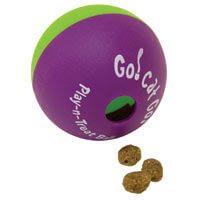

Tuesday, June 1, 2010
Thursday, May 27, 2010
Monday, May 24, 2010
Pain Management
 One of the many things I am very proud to say we do well at Friendship is attend to our patients’ pain. When I had Westin spayed in 1996 I was given the option to provide her with pain medication at an addition cost to the procedure. I was then and fourteen years later still am appalled that someone would not consider pain medication to be essential with intra-abdominal surgery. It seems like that was a long time ago but just last month I encountered a dog that had surgery at another clinic and was not sent home with any pain medication.
One of the many things I am very proud to say we do well at Friendship is attend to our patients’ pain. When I had Westin spayed in 1996 I was given the option to provide her with pain medication at an addition cost to the procedure. I was then and fourteen years later still am appalled that someone would not consider pain medication to be essential with intra-abdominal surgery. It seems like that was a long time ago but just last month I encountered a dog that had surgery at another clinic and was not sent home with any pain medication.It was long thought in veterinary medicine that we did not need to address pain in our patients’ because “animals feel less pain than humans”, “pain is beneficial because it limits activity” and “analgesia hides clinical deterioration”. These rationales are now known to be false and in fact pain can take a tremendous toll on our patients.
Without providing proper pain management we put our patients at risk for delayed wound healing, increased risk of sepsis, prolonged convalescence, increased metabolic demand and cardiovascular stress. Studies in humans suggest that improperly controlled acute pain may precipitate a chronic pain syndrome that can be very difficult to control. Above all else, we have an ethical obligation to provide humane care to our patients.
Friendship provides our patients with multi-modal pain management before, during and after a painful event be it surgery, trauma or illness. We are also aggressive with controlling chronic pain such as that seen with arthritis. This consists of opioid drugs, non-steroidal anti-inflammatories, local anesthetic, constant rate infusions and the therapeutic K-laser.
Animals are very good at hiding pain and it is up to both veterinarians and owners to make sure that they are kept as comfortable as possible.
Thursday, May 13, 2010
Tuesday, May 11, 2010
Brighton and the new baby

Our goal was to anticipate the changes the new baby would make to Brighton’s schedule, and then start introducing those changes five or six months before the baby was due. That way, Brighton would have plenty of time to get accustomed to his new routine, and there wouldn’t be so much to adjust to once Tyler arrived on the scene.
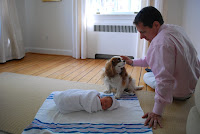
Brighton's owners set up a schedule that they hoped to maintain once baby Tyler arrived. Each day included at least ten minutes of uninterrupted "Brighton time" that would happen no matter what was going on with the baby.

Whitney created a beautiful nursery in preparation for baby Tyler. She and John always left the nursery door open so Brighton could explore the area and get used to the unfamiliar smells of baby powder and diapers. Though he was encouraged to investigate, Brighton was never allowed to sleep on any of the baby's furniture or belongings, because these would be off-limits once Tyler was home.

Once Tyler was born but still in the hospital with her mom, John brought home some of the clothes the baby had worn and left these around the house for Brighton to smell. This gave Brighton a chance to get acquainted with all the smells of a newborn baby, so he wouldn’t besurprised when Tyler came home.
When Whitney and Tyler were released from the hospital, John waited outside their home with the baby while Whitney went in to greet Brighton. Once Brighton calmed down from the excitement of not seeing Whitney for three days, John and Whitney set up a formal meeting of baby and dog. Whitney sat on the couch with Tyler, and John brought Brighton in on a leash. Whitney and John praised and petted Brighton while he approached and sniffed Tyler.
Whitney and John are lucky: since Brighton is an exceptionally well-behaved and sweet dog, he accepted his new sister without missing a beat.

But not all dogs are as laid-back as Brighton. If a dog shows any signs of aggression, excitement or excessive interest in a baby, the dog should be kept on a leash at all times when the baby is present. When only one adult is home, the dog should be kept in a separate room, without any access to the baby. Remember that even a non-aggressive dog may become overly exuberant and cause injury by jumping up on a baby.
A new baby is a big change in any household, but with thoughtful planning the transition can be made as smooth as possible for your furry family members.
Tuesday, May 4, 2010
Canine Cancer Awareness
 As a pet owner who lost a dog to not one, but three types of cancer--lymphoma, melanoma and hemangiosarcoma--I know firsthand how devastating, confusing and overwhelming this diagnosis can be. The only possible shred of good news is that you have the warm, caring embrace of the Oncology Department at Friendship available to you.
As a pet owner who lost a dog to not one, but three types of cancer--lymphoma, melanoma and hemangiosarcoma--I know firsthand how devastating, confusing and overwhelming this diagnosis can be. The only possible shred of good news is that you have the warm, caring embrace of the Oncology Department at Friendship available to you.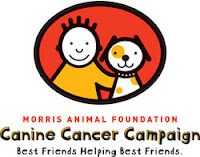
Though most cancers in companion animals are, unfortunately, not yet curable, many are now treatable thanks to devoted doctors like Chand Khanna and organizations like the Morris Animal Foundation. We are making great advances in managing cancer in our beloved pets and one day we will find a cure. I treasured each day I had with Westin and consider myself blessed that she had Dr. Khanna and the oncology service at Friendship looking after her.











